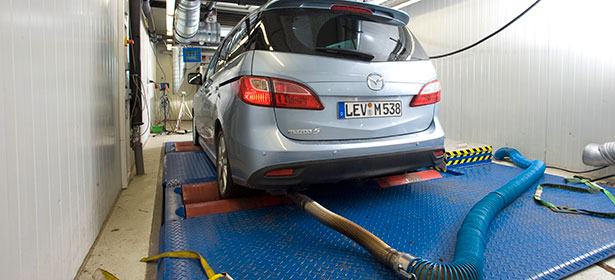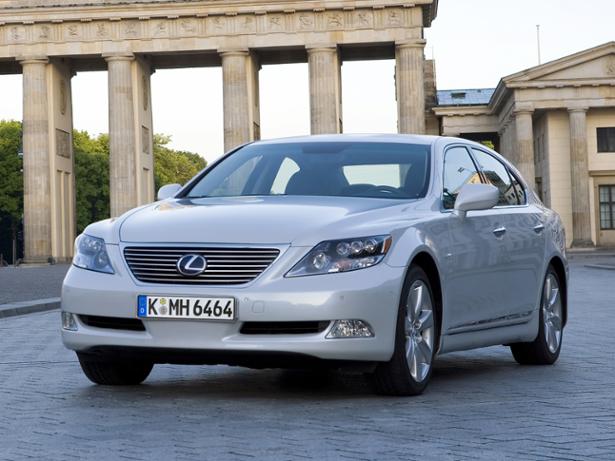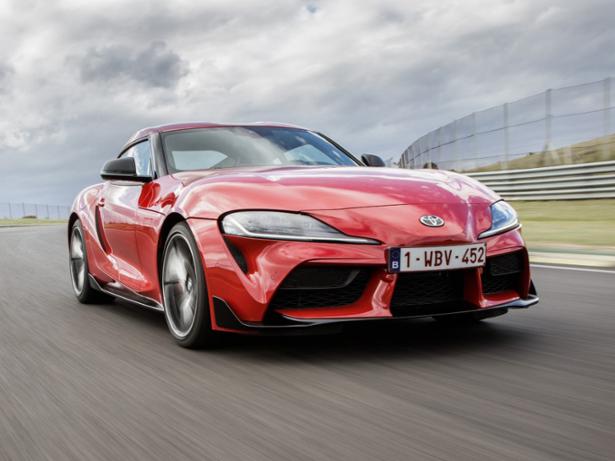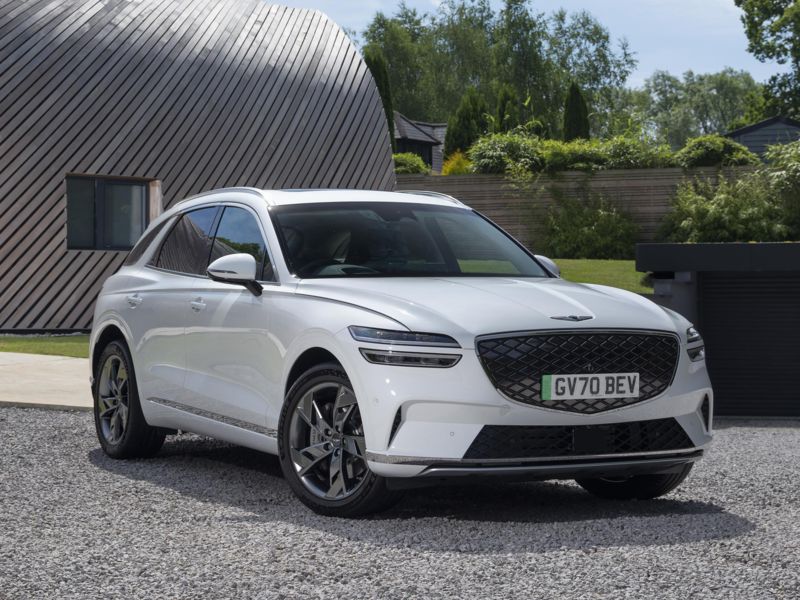How we test cars

In this article
- How safe is it?
- Which? avoidance and stability test
- Video: watch how badly this Jaguar handles our avoidance and stability test
- How reliable is it?
- What are the car's true fuel economy and emissions levels?
- How easy is it to drive the car?
- How comfortable is the car?
- How practical and spacious is the car?
Our lab and road tests allow us to thoroughly assess each car and give our verdict on all the things that really matter to car owners.
From how a car handles to how accurate (or not) manufacturer fuel efficiency or electric car range claims really are.
Plus, our annual reliability survey allows us to incorporate feedback from tens of thousands of car owners. This means we can tell you what a car's like to live with and whether it's reliable or not.
Whatever your needs, our unique independent testing will tell you everything you need to know to choose your next car.
Find out which cars excelled in our tests by heading to our round-up of the best cars.
How safe is it?
We assess how well adult and child occupants, and pedestrians, are protected in a crash by looking at what active safety systems a car has. This includes lane-keeping assist (which should keep you in lane), blind-spot assist (lets you know when someone is in your blind spot) and autonomous emergency braking. We also look at passive safety systems, such as how many airbags there are.
Euro NCAP is a car safety organisation that we helped set up in 1997, and we continue to use its crash results as part of our evaluation.
All cars tested by Euro NCAP are given an overall star rating out of five stars. If a car that has been tested by Euro NCAP gets three stars or less, we make it a Don't Buy car, as we believe modern cars should earn four stars or more to be considered safe.
Since 1997, Euro NCAP has used crash-test dummies to record how well a car's occupants are protected in a crash, should the worst happen. But in more recent years, as passenger safety systems become more advanced, the test also looks at the effectiveness of active safety systems designed to prevent a collision from happening in the first place.
Active safety systems actively monitor the environment around the car and are designed to take premeditative action to avoid an impact, or at least mitigate the worst effects.
Autonomous emergency braking (AEB) is a key safety system that Euro NCAP assesses. It's a system that should detect if you're about have a collision and, if you haven't already hit the brakes, will apply the brakes for you.
The latest addition to the tests in 2018 saw the AEB system being assessed for how well it detects vulnerable road users, such as pedestrians and cyclists. Happily, some modern cars are up to the challenge. The second generation Nissan Leaf was the first car to go through the updated tests in 2018 – and it aced them.
But don't think that all modern cars are up to scratch just because they're new – as proved by the Jeep Wrangler being awarded a single star for safety.
Some cars have optional safety kit that you can purchase as an optional add-on, or is available with a higher trim version of the car. In these cases, Euro NCAP awards the vehicle two separate star ratings – one with the optional safety kit, and one without.
When two star ratings are available for the car, we always use the lower safety rating from the version of the car without the additional safety equipment. This is because we believe that safety should not be an optional extra.
Which? avoidance and stability test
Hopefully it will never happen, but if you find yourself in a situation where you have to swerve around something, or someone, at the last moment, you need to be sure your car won’t spin out of control.
Travelling at speeds up to 56mph, we conduct a test in which we swerve around an object and rejoin the original lane. This determines how stable and controllable a car remains, and whether it is likely to understeer (lose grip from the front, and continue in a straight line) or oversteer (where the rear axle loses traction, potentially resulting in a spin).
The assessment takes into account the behaviour of a car's ESC (electronic stability control) system, and how likely it is to keep the car on its intended line, should you need to make a sudden manoeuvre.
Video: watch how badly this Jaguar handles our avoidance and stability test
The video below shows the Jaguar F-Pace SUV, which handled the course badly and locked its wheels, compared with the rival Audi Q5 which handled the course very well. In real life, the Jaguar could leave you in an oncoming lane of traffic for longer.
How reliable is it?
Our lab tests are good, but they can’t predict the future – that’s where the annual Which? car survey comes in.
Every year, tens of thousands of people tell us about the cars they own. Through this survey we learn about a car’s common faults, annual repair bills and owner satisfaction.
Simply put, if a car is unreliable, it won’t be a Best Buy.
The information you give us also helps us track any issues, from potential problems with specific models to identifying areas of research we can follow up on for future reports and investigations.
You can also use our online car reliability checker to find out what common ailments your car suffers from.
What are the car's true fuel economy and emissions levels?
With diesel-fuelled cars falling out of favour and hybrid and electric cars on the rise, we're all more aware than ever of poor air quality. This is why our fuel economy and emission tests have never been so relevant.
Many cars struggle to meet their official fuel economy (mpg) figures when they’re faced with our more realistic tests, which include a motorway element to truly assess fuel consumption at high speeds.
We also measure emissions in the same stringent tests and have found a large number of cars that, although they pass official tests, emit big quantities of toxic gasses such as NOx and CO.
We've also found a few that are really clean; there is such as thing as a diesel car that produces low amounts of NOx.
This is such an important part of our tests that we've created a dedicated guide to how we test mpg and emissions.

How easy is it to drive the car?
You'd expect modern cars to all be a piece of cake to drive. But we know that's not the case. To save you from buying a car you later regret, you can use the results of our tough tests to choose the best car for your budget.
Engine smoothness and gearbox
We rate how smoothly the engine delivers its power.
- A good rating will see the car pull away in a smooth, controllable manner
- A car with a poor rating will struggle to pull away or match national speed limits, jerking upon acceleration or changing gear.
We also look at in-gear acceleration and see how well a car accelerates from 37mph to 62mph. This simulates moving to a faster lane on a dual carriageway or motorway, or overtaking a slow-moving vehicle on a country road.
Brakes
In an emergency, you need to know if you’ll be able to brake quickly and without becoming unstable. To assess this, we conduct repeated emergency stop tests from 62mph (100kmph) and record the average distance covered over ten attempts. Not only does this allow us to assess a car’s overall braking performance, but whether that performance is consistent and how likely they are to overheat or fade. We also brake around bends to test the car’s directional stability.
We score braking distances on a sliding scale, with 30 metres representing a perfect score and 45 metres the very worst. Sports cars tend to very well here as they have strong brakes to soak up their performance. For instance the Toyota Supra scores five stars in this area of our test as it stops dead – and without fuss – in just 31.1 metres.
That’s not to say you’ll need a racy car for the best braking performance. The Ford Galaxy large MPV also gets a five-star rating, as its brakes haul its bulk to a halt in an impressive 34.7 metres. By contrast the Ssangyong Rexton large SUV, which has poor braking performance, stops in 39.4 metres or around two pedestrian crossings longer.
Driven on UK roads
We aim to drive every car that we test in the lab on UK roads too.
Occasionally, we will present a first drive review written by one of our researchers. This is purely subjective but is a way for us to present our initial impressions of certain cars while we wait for them to be tested in the lab.
How comfortable is the car?

Ride quality
How comfortable you’ll be depends on how well the car handles the lumps, bumps and gaping potholes that make up the DNA of UK roads. Our test track has all those features and more. We drive over it repeatedly to assess a car’s suspension.
Comfort
We also look at how well padded and supportive the seats are, making expert assessments of lumbar, thigh and head support. Our tests reveal which cars will keep you comfortable on long road trips and which won’t.
Noise
We both measure and subjectively assess the trio of road, wind and engine noise in each of our tested models. If a car makes a massive racket the entire time you’re driving, you won’t want to be inside it for long.
How practical and spacious is the car?

Seat space
We use a dummy to work out how much head, leg and knee space there is for the driver and all passengers. We don’t just get inside the car and comment on the amount of room inside.
Ease of entry and exit
We assess every car on how effortless it is to enter and exit. This is particularly important if you or any of your regular passengers have mobility issues or are particularly tall.
So you'll know if it’s a case of just sliding in easily, or whether you’ll end up doing an awkward side shimmy or bending over double just to get yourself into the vehicle.
Boot space
Car manufacturers vary in the way they measure their claimed boot space, and can include removing carpets or counting spaces that would normally be filled with a spare tyre.
We load the boot with foam blocks to figure out the usable amount of space, ignoring useless nooks and crannies.

As well a providing you with the exact measurement of each boot, we give each car a boot space rating out of five, so you can easily compare cars at a glance.
Our boot space star ratings used to be class specific, but we changed our test programme in 2017. Cars tested after this date are comparable across similar classes.
Visibility
Being able to see out of your car and judge its dimensions easily is critical to safety and ease of use. Regardless of how many parking aids you've got fitted, a car with large blind spots will feel cumbersome to drive. Not only will it be more hassle to park and manoeuvre on tight city streets, you're more likely to miss objects or people close to the car while you're driving.
Visibility is affected by a number of factors. This includes:
- The type of car – sports cars traditionally have poor visibility thanks to their low driving position and small rear windows. Don't think a large SUV will necessarily be the perfect choice though. Our visibility tests have revealed models that put dramatic styling over ease of use.
- Positioning of the seats and mirrors
- Window size and also window-pillar size (something that’s increased in recent years, as manufacturers strive for greater crash safety)
While robust bodywork is important to protect occupants in a crash, car manufacturers need to strike the right balance between this and being able to see out clearly.
At a glance, it’s not always obvious whether a car will give you the visibility you need when you’re driving. Rather than simply assessing the view out of the car subjectively, we use a rotating camera to give a 360-degree image of the cabin from the driver’s perspective. Our tests also scrutinise the quality of the headlights, as well as driver assistance technologies - such as reversing cameras.
We do this so you can accurately compare the usability of individual models without having to waste time test driving them, only to find they aren’t suitable for this most basic of reasons.
Below is the rear section of a 360-degree image of the Mercedes GLC Coupe. Obstructions to the driver’s all-round field of vision are colour coded depending on what the obstruction is and how severely it interrupts the driver’s vision. Rearward viability is particularly important, so the rear windshield is split into two.
Dark blue: Anything that disturbs the view directly below the mid-point line is highlighted in dark blue. The GLC Coupé’s headrests and high window line restrict a lot more of what you would be able to see immediately behind the car, so there is a lot of blue shading.
Pink: Anything above the middle line directly to the rear is coloured in pink and is more detrimental to the visibility rating. Having your view obstructed at this height can be more problematic in everyday driving.
Light blue: Measures narrow windows. They are positive rather than negative, and improve the ratings for the adjacent pillars (coloured in yellow and pink), as small windows such as this aid visibility, albeit by a limited amount.
Using this method we can get consistent and comparable data on all-round visibility for every car we test.

How do we test hybrid and electric cars?
Whatever fuel a car uses, we subject it to the same rigorous test regime that analyses performance, comfort, practicality and more. After all, you shouldn't have to make compromises just because you’re looking to reduce your carbon footprint.
This means that scores for traditional fuel, full-hybrid, plug-in hybrid and full electric models are comparable (within each of our car classes – so small cars can be compared with other small cars, and large SUVs with other large SUVs).
The way they are powered means there are inevitably slight variations in the way we test the energy consumption of hybrid and electric vehicles. For example, electric cars' fuel economy is measured as the electricity the car will use to travel 100km (62 miles) rather than miles per gallon (mpg). You will see these figures stated in terms of 'kWh/100km'.
For more information, head to our guide on how we test MPG and emissions.
How do we score different cars?
The overall score in each of our car reviews combines all of our test results with data from our car reliability survey. Each Which? test score comprises the following:
- 60% of the total test score comes from our vigorous lab tests, covering the main facets of our testing: performance; ease of driving; practicality and comfort; and fuel economy and emissions.
- 30% comes from reliability – brand reliability is used when we don’t have sufficient reliability information for that particular model.
- 10% comes from our safety assessments. If the car has been tested by Euro NCAP, we also consider its rating.
How much each facet of our lab tests contributes toward a car's overall score changes across the different car classes.
Ready to find your next car? Use our expert, independent new and used car reviews.
Compare car insurance
Find the right policy for your vehicle using the service provided by Confused.com
Get a quote now

